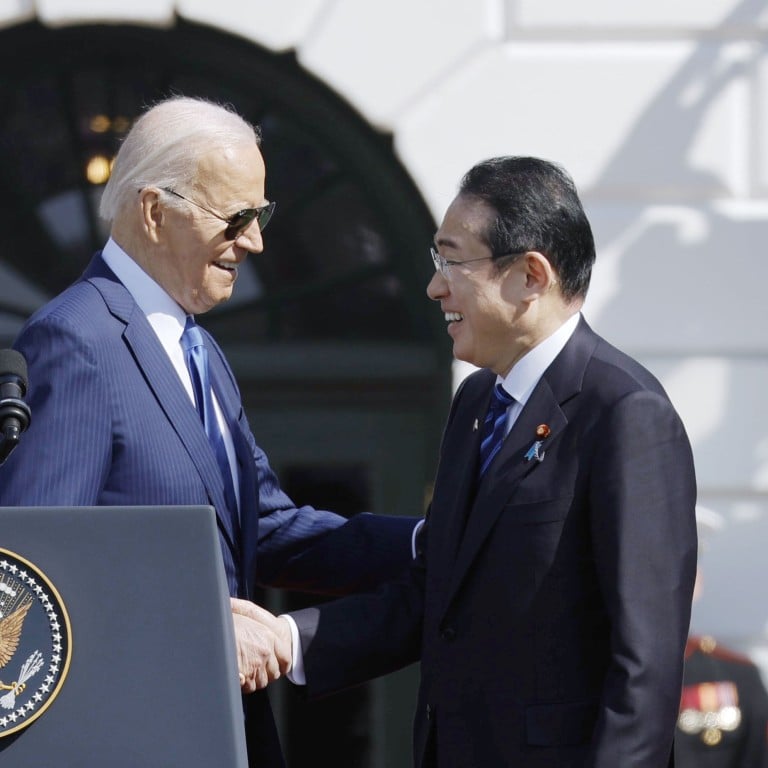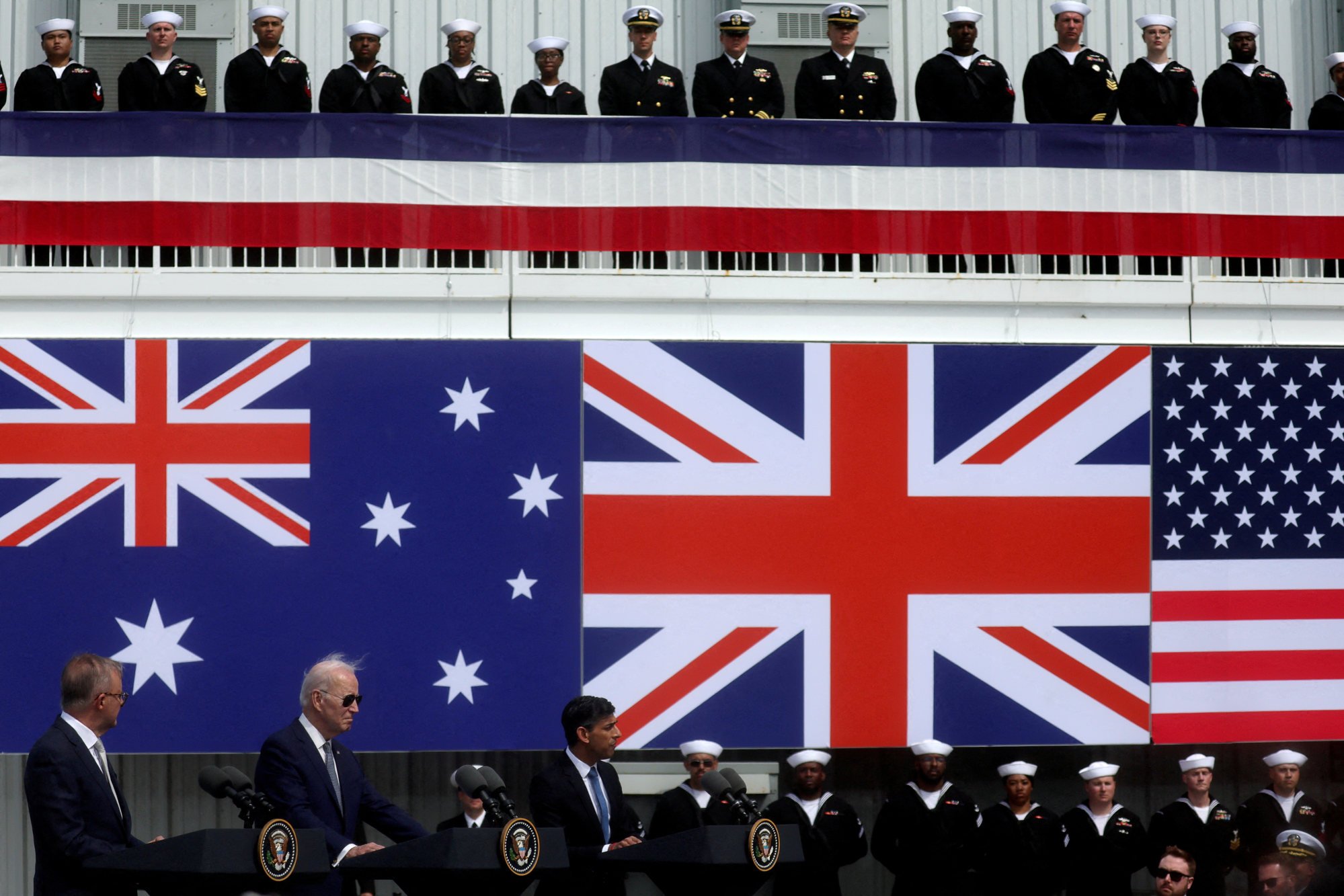
Is Japan joining Aukus? Not just yet – but it has a keen interest in its success
- Japan was an early supporter of Aukus, viewing it as a positive step for regional security that would counterbalance China’s heavy-handed influence
- But getting more involved in is a delicate balancing act, given Japan’s historical reticence towards militarisation and history of leaning on the US
What role could Japan possibly play in the alliance? And what are the potential complications?
US-Japan defence upgrade aimed at tackling ‘more assertive China’: envoy
It is not surprising, then, that Japan has doubled down on its alliance with the US and security ties with other like-minded nations. It was an early supporter of Aukus, viewing the alliance as a positive step for regional security that would counterbalance China’s heavy-handed influence.
For some time now, Japan was talked about as a potential fourth partner in the agreement. While the US, UK and Australia have all said they are interested in working with Japan, however, a formal invitation to become a so-called “Pillar I” partner is not likely any time soon.

The Pillar I level of the partnership involves the US transferring nuclear submarine propulsion technology to Australia. In the meantime, the US will operate a rotational submarine force in Western Australia, until Australia is supplied with refurbished, second-hand US Navy Virgina-class submarines, expected in the mid-2030s.
Japan has advanced technological capabilities that are very much in demand in Aukus – not just in the Pillar II space, but also within Pillar I.
This includes nuclear research and technology, which could prove useful as the Aukus partners look to accelerate the quantity, scale and speed of production of nuclear-propulsion submarines. Japan’s expertise does not necessarily extend to weapons-grade nuclear technology, but its civil nuclear-energy capability places it at the forefront of potential candidates for engagement on this front.

Japan, however, has its own robust diesel-electric and air-independent propulsion submarine production lines, which does not make participation in Aukus Pillar I that important for the country. With a much shorter coastline to traverse, its submarines can remain submerged and undetected for most of their potential missions – unlike Australia with its long transits between coastal ports.
Nonetheless, Japan has strong capabilities and critical skills in the areas covered by the Pillar II level of cooperation. And Japan has a keen interest in making sure those skills and capabilities are honed and world-class. This makes participation in Pillar II key to its national interests.
There is a complicating factor, though. Aukus is still a very new partnership. As such, it is struggling to translate good will and the high levels of political support it enjoys in all three countries into practical benefits. This includes ensuring the drafting and implementation of procedural mechanisms to allow technology transfers to take place between the members.

Such mechanisms are difficult enough to organise between three countries that speak the same language and are culturally very close. Japan, while increasingly seen as a trusted member of Western partnerships, remains a country that is culturally very distinct and comes with a deeply ingrained historical reticence towards militarisation.
In addition, Japan has acquired a reputation of being relatively vulnerable to cyberattacks and espionage. More than 70 years of leaning on the US as its defence guarantor has generated what has been perceived as a relatively lax approach towards security, secrecy and maintaining trusted and watertight networks – although recent legislation could address these shortfalls.
While the Aukus countries have had their own fair share of domestic security challenges and leaks, they see themselves as having learned from past mistakes in a way that Japan has not yet mastered.
How should Australia use Aukus submarines? Up to them, says US Pacific commander
This has not been replicated with any other international partners to quite the same level, extent or duration. This intimate, familial collaboration is not widely understood by outsiders, but cannot be easily replicated and is handled with delicacy by these countries. No one inside Aukus wants to mess with the dynamics that have enabled such close and trusted ties.
In addition, there is a reluctance to go beyond three core members of Aukus until the envisioned technology sharing is proven to work. It remains a fragile endeavour, in part because all three members are rambunctious democracies that are going to have multiple elections throughout the lifetime of the project.
So it is a delicate balancing act to encourage Japanese engagement in external security arrangements, while being mindful the country still has a constitution that binds it to a strictly defensive and relatively benign military posture. It is, however, more willing now to acquire offensive military capabilities.
No doubt, such initiatives will be frowned upon by China. But this is not happening in a vacuum. Indeed, the Aukus alliance would not be politically possible were it not for the dramatic upsurge in Chinese defence spending and its relentless cyberattacks and “grey zone” operations in the region.
On balance, it appears Japan’s inclusion in a number of discreet components of Aukus looks like the next natural step in response to these rising challenges.

